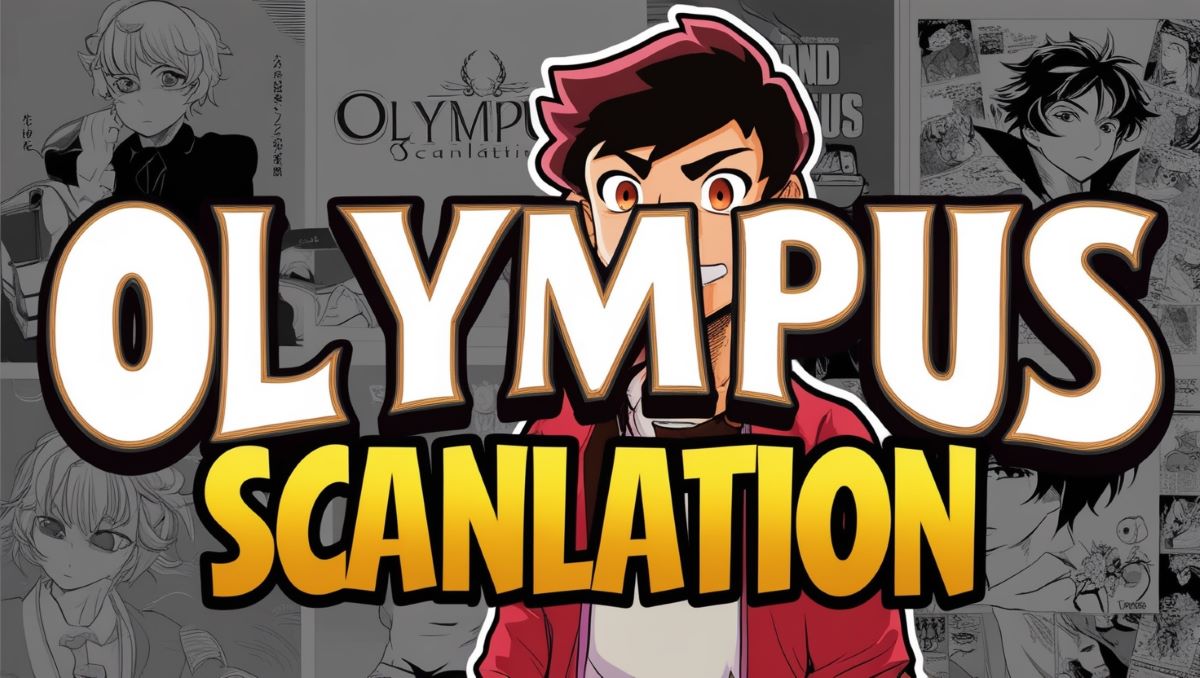Introduction to Scanlation and Traditional Publishing
In the vibrant world of manga, two distinct avenues for storytelling have captured the hearts of fans: Olympus Scanlation and traditional publishing. Each path offers unique experiences and insights into how we consume our favorite series. With a plethora of choices available, readers often find themselves torn between the rapid accessibility of scanlated content and the polished pages from established publishers.
But what sets these two apart? What are their histories, processes, and implications for creators and consumers alike? Join us as we delve deep into the fascinating differences between Olympus Scanlation and traditional publishing, exploring everything from quality to legal concerns. Whether you’re a die-hard fan or simply curious about this dynamic landscape, there’s much to uncover in the realm where ink meets pixels!
History of Scanlation and Traditional Publishing
Olympus Scanlation has its roots in the late 1990s when fans began to translate and edit manga for online distribution. This grassroots movement emerged from a desire to share beloved stories with those who didn’t understand Japanese. Early scanlators worked diligently, often using basic tools and sharing their work on forums and websites.
Traditional publishing, however, boasts a much longer history dating back centuries. Manga as we know it today gained popularity post-World War II in Japan. Publishers like Shogakukan and Kodansha established themselves as key players, bringing iconic series to print.
The clash between these two methods sparked debates about accessibility versus authenticity. While traditional publishers uphold industry standards, Olympus Scanlation thrives on community-driven enthusiasm. Each contributes uniquely to the landscape of manga consumption globally, shaping how audiences experience these captivating narratives through different lenses over time.
The Process of Scanlation vs. Traditional Publishing
The process of Olympus Scanlation is a collaborative effort, often driven by fans. It begins with scanning the printed pages, usually from magazines or books. This step captures the original artwork and text.
Next comes translation. Volunteers proficient in Japanese convert the dialogue into their native language while maintaining cultural nuances.
After translating, typesetting takes place where the translated text is integrated back into the scanned images. Editors play a crucial role here, ensuring clarity and coherence.
In contrast, traditional publishing follows a more structured path. Authors submit manuscripts to publishers who assess content quality and market viability.
Once accepted, extensive editing occurs before layout design brings it to life visually. The final stages involve printing and distribution through established channels.
While both processes aim to deliver stories to readers, they differ significantly in organization and execution style.
Legal Issues Surrounding Scanlation and Traditional Publishing
Legal issues in the realm of Olympus Scanlation and traditional publishing often create a complex landscape. Scanlation, which typically involves unauthorized translations of manga, operates in a gray area legally. While fans argue that it increases accessibility, publishers see it as intellectual property theft.
Traditional publishing follows strict legal protocols. Publishers acquire rights from authors and artists before producing works. This ensures creators are compensated for their efforts.
The disparity between these two forms can lead to tension within the industry. Traditional publishers push for stricter enforcement against scanlations to protect their profits and support creators. Conversely, many fans feel that scanlation serves as a bridge while they await official releases.
As digital media thrives, laws struggle to keep pace with technology’s rapid evolution. The clash between fan-driven enthusiasm and creator rights is becoming increasingly pronounced.
Quality and Credibility Comparison between Scanlation and Traditional Publishing
When comparing the quality and credibility of Olympus scanlation and traditional publishing, several factors come into play. Traditional publishers often have rigorous editorial standards. They employ professional editors, translators, and proofreaders to ensure a polished final product. This process usually guarantees consistency in style and accuracy.
On the other hand, scanlation teams are typically composed of fans working on a volunteer basis. While many strive for high-quality translations, the lack of formal training can lead to variations in quality. Some groups may produce work that resonates well with readers due to their passion for the source material.
Credibility also plays a role here. Established publishing houses enjoy recognition that lends authority to their titles. Conversely, while certain scanlation groups gain reputations over time—like Olympus scanlation—they still operate outside legal frameworks which can impact their standing within the wider industry landscape. The choice ultimately depends on what readers prioritize: professionalism or community-driven enthusiasm.
Impact on the Manga Industry
The impact of Olympus scanlation on the manga industry is significant and multifaceted. For many fans, scanlations provide immediate access to titles that might not be available in their region. This accessibility fosters a robust global community, allowing readers to engage with content from around the world.
However, this convenience comes at a cost. Traditional publishers often lose potential revenue due to free alternative platforms like Olympus scanlation. As a result, some creators may struggle financially without adequate support for their work.
Despite these challenges, scanlation can also serve as a promotional tool. When done respectfully and legally, it introduces new audiences to series they might otherwise overlook. Many readers transition from fan-translated works to purchasing official versions once they discover a title they love.
This dynamic creates an ongoing conversation about value and authenticity within the ever-evolving landscape of manga publishing.
The Process of Scanlation: From Scanning to Editing
Scanlation begins with scanning the original manga pages. High-resolution scans are essential for maintaining quality. Enthusiasts often use specialized scanners to achieve this.
After obtaining the scans, the next step is image editing. This involves cleaning up any imperfections and removing text from speech bubbles or captions. Software like Photoshop is commonly used for this process.
Once cleaned, translators take over. They convert the original language into English or other languages while trying to preserve cultural nuances and context.
Next comes typesetting, where translated text is inserted back into the cleaned images. This requires precise placement to ensure readability and maintain visual appeal.
Proofreaders review everything before release. They check for translation accuracy, typos, and overall flow of dialogue. The result? A polished Olympus Scanlation ready for eager readers online.
The Process of Traditional Publishing: From Submission to Print
Traditional publishing follows a structured path. It begins with authors submitting their manuscripts to publishers. This step often requires careful research to find the right fit for their work.
Once received, editors assess submissions based on market trends and quality. If a manuscript piques interest, it may undergo rounds of revisions. Authors collaborate closely with editors to refine the content.
After final approval, design teams take over. They create eye-catching covers and format pages for print and digital versions. This phase is crucial as first impressions matter.
Next comes marketing strategy planning, which helps in reaching potential readers effectively. The printed copies hit bookstores and online platforms alike, marking the culmination of an extensive process driven by collaboration between many professionals in the industry.
Advantages and Disadvantages of Scanlation
Olympus Scanlation offers several advantages that appeal to manga enthusiasts. It provides access to a vast array of titles often not available in English or other languages. Fans can easily discover lesser-known works and hidden gems.
Another benefit is speed. Scanlation groups typically work quickly, releasing chapters shortly after the original publication in Japan. This immediacy keeps readers engaged and up-to-date with their favorite series.
However, scanlation also has drawbacks. The quality can vary significantly from one group to another, leading to inconsistencies in translation and editing standards.
Moreover, there are legal issues surrounding scanlation that creators face as they navigate copyright laws. This raises ethical concerns about supporting artists versus accessing content freely through unofficial channels.
Despite these challenges, many fans continue to support scanlations due to their accessibility and the sense of community among fellow readers.
Advantages and Disadvantages of Traditional Publishing
Traditional publishing brings a wealth of advantages to authors and readers alike. For one, it provides professional editing, marketing, and distribution support. This ensures that the final product reaches a wider audience with polished quality.
Moreover, established publishers often have strong relationships with retailers. They can secure shelf space in bookstores and libraries that self-published works might struggle to achieve.
However, there are drawbacks as well. The submission process can be lengthy and daunting for aspiring authors. Rejection is common, leaving many talented voices unheard.
Additionally, traditional publishers usually retain significant control over creative decisions. This may stifle an author’s unique vision or style.
The financial aspect also poses challenges; advances may not always reflect potential sales success. Authors often receive lower royalties compared to other publishing methods once contracts are signed.
Ethics and Legal Considerations
Ethics and legal considerations play a crucial role in the debate between Olympus Scanlation and traditional publishing. Olympus Scanlation often operates in a gray area, where creators may not have granted permission for their work to be translated or shared. This raises questions about intellectual property rights.
On one hand, scanlators argue that they provide access to content that might otherwise remain unavailable to fans outside Japan. They believe they foster community engagement by introducing new audiences to manga.
Conversely, traditional publishers invest time and resources into licensing works legally. They ensure that creators receive compensation for their efforts. This promotes sustainability within the industry.
Navigating these ethical waters is complex, as both sides present valid points. Fans must weigh their desire for accessibility against supporting original creators through legitimate channels. The impact of these choices reverberates throughout the manga landscape.
Impact on the Industry
The rise of Olympus scanlation has significantly altered the landscape of manga consumption. With a vast library available online, fans can access titles that traditional publishers might overlook. This availability fosters a dedicated reader base, eager for both mainstream and niche genres.
However, this surge in fan translations also poses challenges for the industry. Traditional publishers face pressure to adapt quickly to changing reader demands. The speed at which Olympus Scanlation are released often outpaces official translations, creating an ever-growing competition.
Moreover, Olympus Scanlation communities cultivate unique cultures around their projects. They engage directly with fans through social media and forums, building excitement around series long before they reach bookstores.
As these dynamics evolve, questions about sustainability arise. Will traditional publishing find ways to coexist with the passionate world of Olympus Scanlation? Or will one inevitably overshadow the other as both seek to capture the hearts of manga enthusiasts?
Conclusion
The ongoing debate between Olympus Scanlation and traditional publishing raises significant questions about how we consume and appreciate manga. Each method has its unique flair, shape, and influence on the industry.
Olympus scanlation offers quick access to a wide variety of titles that may not be available through traditional channels. It caters to niche audiences with specific tastes, often translating works swiftly for fans hungry for content. However, it operates in a legal gray area that can create tension with creators and publishers.
On the other hand, traditional publishing provides structure and authenticity. It ensures quality control and supports artists directly by compensating them for their work. While this process is slower and sometimes limits accessibility due to language barriers or regional restrictions, it solidifies a framework that benefits all stakeholders involved.
As both methods evolve alongside changing technology and consumer expectations, finding common ground will be key to serving the passionate manga community effectively. The future may see more collaborations between these two worlds—where scanlations support mainstream releases or where publishers embrace digital innovation to reach wider audiences faster.
The landscape is constantly shifting; fans should remain engaged with both forms as they contribute uniquely to the vibrant world of manga storytelling.






![Ztec100.com: Your Definitive Manual for Tech[2024]](https://reelsmedia.co.uk/wp-content/uploads/2024/09/ztec100.org_-150x150.png)










